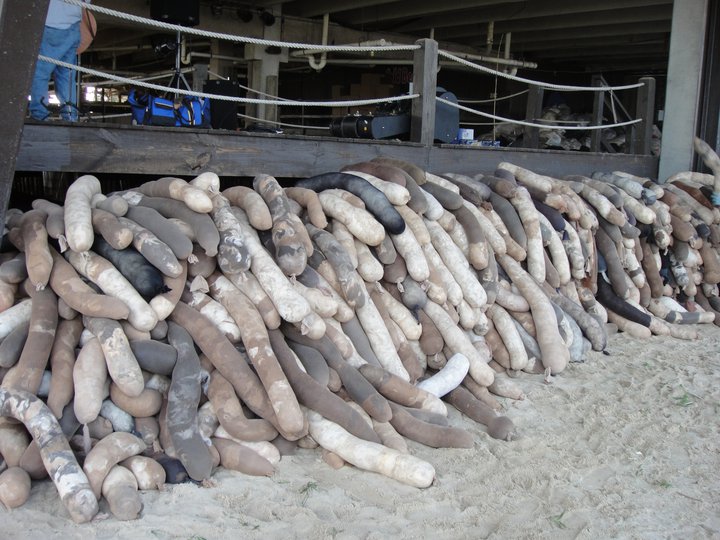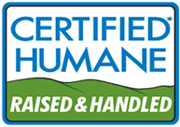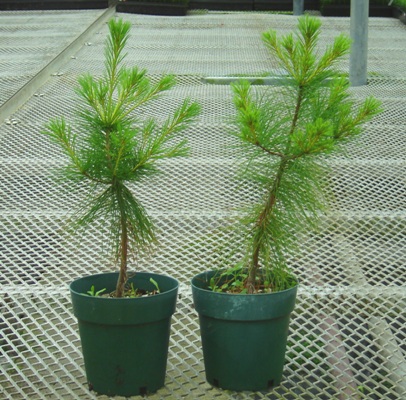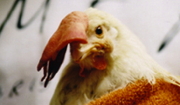Why is it that an 11 year-old boy can clearly see what is wrong with our food system, but most grown-ups can’t? Watch this. It’s pretty great.
Tag Archives: people making a difference
Wild Bird Fund
New York City is the only city that doesn’t have a wildlife rehabilitation center. The good folks at Wild Bird Fund, Inc. are working to build one. Take a peek at this video to see some of the work they do in their make-shift quarters.
On their site, you can click to vote for them to get funding from a Pepsi grant, and to learn more about what they are doing.
Plano man converts yard to wild prairie of native plants | News for Dallas, Texas | Dallas Morning News | Home and Gardening | Dallas Morning News
This article is about a Texas man who, over two years, turns his yard from the typical St. Augustine grass lawn, to a wildlife oasis using native plants. He chronicles the transformation on his blog, which you can read here. One thing I like about the article is how the neighbors came to appreciate his work, even though initially they worried it “didn’t fit with the neighborhood.”
I can’t stress enough how important it is to plant species native to your area. They are particularly adapted to your climate, which means they don’t need supplemental watering or fertilizing. But even more importantly is how crucial they are to the survival of wildlife. Whenever we build new buildings, we lose more native plants. In their place, we usually plant non-native plants and grassy lawns. The wildlife that used to live there now has nothing to eat, because insects and other critters are often only able to eat one type of plant. Who cares about a bunch of bugs you say? Well the birds do. If the creepy crawlies die out, the birds don’t have anything to eat and they move on. Or they die out too.
People like Michael McDowell in the article above and many others are realizing this and planting native species, which builds islands of native habitats, and can have a great impact on helping wildlife.
Donate Hair to Absorb BP Oil Spill
One of the stranger things I’ve read today has been that human and animal hair and fur is being used to soak up the oil washing up from the BP spill in the Gulf. An organization called Matter of Trust is accepting donations of hair, fleece, and feathers to make into mats and booms to aid in the BP Gulf oil spill clean-up.
Go to this site for more information. Just think about how shipping hair over long distances is going to use oil though. This is probably a better local venture.

A Deep Breath
A few days have now passed since the panel discussion I participated in and I have learned a few things.
The first thing I learned was that I was naive. I didn’t do my research on my co-panelists. Even if I had, I never would have seen the fact that two of them were vegan as something that should cause alarm. I still believe the film was done by dedicated animal lovers and is a very valuable tool to help in stopping animal cruelty. It turns out that the organizer, Isa, was in the same boat as me.
The second thing I learned was that Isa was as surprised as I was when the panel got mean and accusatory. She and I have been exchanging emails since the event trying to figure out what happened. I questioned whether she purposely set me up, and she didn’t. So I am close to being as guilty as my co-panelists in terms of vilifying before understanding. Isa is one of the good guys who is organizing an impressive range of films, which I recommend attending if you are in NYC.
So I’m going to stop licking my wounds and move on to talk about all the great things people are doing to raise awareness.
Green Screens is the Lincoln Center film series organized by Isa. There are two upcoming events that look to be interesting. On July 22nd they will screen Climate Refugees by Michael Nash and on August 10th they will screen Vanishing of the Bees by George Langworthy and Maryam Henein. I had trouble finding information on the Lincoln Center website, but maybe you will fare better.
On the information table at the film screening I saw materials from The Meatrix. They are a group that is working to raise awareness about the inhumane conditions on factory farms. Take a peek at their website and here’s one of their videos below. They suggest reducing the amount of meat you consume (Meatless Monday), which is very reasonable. Westerners consume way more meat than is good for them (or the animals).

Certified Humane. I found a description of the Certified Humane program on the ASPCA’s website, so I am confident that it isn’t some bogus marketing ploy. They say, “The Certified Humane Certificate Program is an inspection, certification and labeling program designed to ensure that animals raised for food are treated humanely throughout the entire production process. Producers who display the Certified Humane Raised and Handled label on their products have treated their animals humanely at every stage of the food production process.” You can read more about it on their own website. You can even find sources of certified humane products near you on their website.
Green Screens at Lincoln Center Present Fowl Play
On Thursday, May 13th at 6:30pm, Green Screens film society of Lincoln Center will screen Fowl Play by Adam Durand, 2009, USA; 50m
Most Americans are opposed to the inhumane treatment of animals—which is why the egg industry is so secretive about the operations that yield food for our breakfast tables. Fowl Play investigates hen abuse in the industry, drawing on the dedicated documentation of activists. Interviews with rescuers, veterinarians, and animal behaviorists challenge us to consider the politics of ethical eating.
with
Cows Are Nice (Kor ar Fina), Stephan Jarl, 2007, Sweden; 13m
A gentle look at the last day at a small Swedish dairy unable to compete with EU factory farms. While local farms shut down, Sweden is now importing milk.
Following the screening there will be a Q&A with Matt Rice, Mercy for Animals; Jenny Brown, Founder, Woodstock Farm Animal Sanctuary; Martha Lazar, chicken keeper and blogger (brooklynfeed.com) and Elizabeth Ayer, BK Farmyard’s farmer /consultant, Farm Director and Caretaker at Wyckoff Community Garden and Farmers Market. Followed by a reception in the Furman Gallery.
Walter Reade Theater, 165 W 65th Street, upper level
Tickets available at the box office or online here.
The Film Society’s Green Screens program addresses through film the vital environmental concerns of global warming, the safety of our food supply, sustainable living, and more. Programmed by Isa Cucinotta and Marian Masone.
Baby Condor!
With all the depressing stories of how badly we’ve messed up our planet, it is nice to hear a good one once in a while. This one is about the California condor. The bad part is that this enormous bird (wingspan of 10 feet) is so endangered that in 1982 there were only 22 left. They were placed in captive breeding programs, which were successful and some birds have been released. A few more problems and then I’ll get to the good part. Well, it turns out that hunters often leave their kill with lead-leaching bullets still in them. The condors eat the carrion and get lead poisoning. And some of the released birds don’t have their parents teaching them about safety, so they sit on power lines or come up to people (remember we’re the bad guys in this scenario).
Okay, now for the good news. Two condors that were released from the breeding program decided they liked one another. Condors breed for life, so it pays to be choosey. They showed mating and nesting behavior, so the good folks at the breeding program snuck their egg away and replaced it with a plastic one. Young condors often squish their eggs and we’re trying to have more condors. They tested the egg, which turned out not to be good anyway. The embryo had died, so they switched it with a fertilized egg from their breeding program that was getting ready to hatch. The pair don’t seem to have noticed that the baby looks surprisingly like the mother’s distant uncle and have taken to caring for it. It will live with it’s foster parents for a year until it’s 3″ wings grow to be 9 1/2 feet. And hopefully they won’t feed it lead-laced meat or let it sit on power lines! To emphasize how big a deal this is, it’s been almost 100 years since a baby condor was born out of captivity.
It’s hard to find a photo of a baby condor because there just aren’t many of them around. Click here to see one being raised by a condor puppet parent.
Renew Clothing
My daughter Lindsay has the idea that my husband and I can repair anything. She gives Neil her toys and I get her clothing. We usually are able to fix her things in a way that works for her. Cute patches on knees of jeans, etc. Neil jokes about starting a company called “Made in China, Repaired in Brooklyn.” I like that Lindsay likes us to repair items, rather than tossing them out.
I just read Lyanda’s The Tangled Nest post about patching a favorite pair of pants. Lyanda is the author of a lovely book called Crow Planet, which I will write about soon. (It’s been in my reading list on the sidebar here for ages) She calls me her East coast soul sister and I think she’s right. In her blog post, she asks people to write about things they have creatively rescued. Many posts were about people taking old large-sized clothing to turn into new small-sized garments. It made me think of a blog that was devoted to just that. And I can’t think of the blasted name of that blog. They asked people to take a pledge not to buy new clothing, and instead bring new life to their existing wardrobe. They had great ideas for converting t-shirts and other things into pretty hip new garments. Somebody please help me with the name of this blog.
So while I was searching for the blog online, I came across this article in NYU News about Project Design, which is a program designed to teach low-income women how to reclaim used/vintage clothing. They teach the young women how to design, sew, etc. Take a peek at the article. It is a really nice idea.
Saratoga Tree Nursery – School Seedling Program

If you live in New York State, you might be interested in the School Seedling Program offered by the Department of Environmental Conservation. All schools and school-sponsored organizations are eligible to receive 50 tree seedlings (for which you will need 1,800 square feet of space). If you have less space, you can get their Urban Wildlife Packet, which contains 30 seedlings for shrubs that are favorites of songbirds. You only need 900 square feet of space for the shrubs.
The seedlings must be used as part of an educational program and not just landscaping for the school. The deadline is March 31st. You can get the application and more information here.
Helping the environment for free? How could this get better?
Chickens seized in a raid of a meth lab
Here’s a strange chicken story that was in the Poughkeepsie Journal today:
SAUGERTIES — The Catskill Animal Sanctuary will soon be home to 40 scrawny chickens seized in a raid on an illegal methamphetamine lab in Kansas City, Mo.
Two volunteers with the haven for abused and abandoned farm animals inSaugerties are flying to Terre Haute, Ind., to pick up the chickens and then drive a rental truck the nearly 1,000 miles back to Saugerties, said Michelle Alvarez, sanctuary director of communications. The birds are expected to arrive in Saugerties late Sunday evening.
“They’re going to drive all night,” Alvarez said Friday.
The neglected chickens were discovered during a recent police raid of a property in Kansas City where a woman was operating multiple crystal meth labs. The police found the woman was keeping dozens of chicken in an abandoned house with no heat, electricity or water.
“The chickens were emaciated,” Alvarez said.
A local dog and cat shelter in Kansas City took immediate possession of the chickens while a search for a permanent home began. The fact that the Catskill Animal Sanctuary recently built a new poultry barn that holds up to 75 birds is one reason the 40 starved chickens will be traveling halfway across the country to recover.
“We’re delighted to be able to help, and so grateful to our volunteers for their superhuman effort,” said Kathy Stevens, Catskill Animal Sanctuary director.
The chickens will be given thorough exams and any necessary medical treatment when they arrive in Saugerties. As soon as the birds are healthy, they will be available for adoption to those living within a two-hour drive of the sanctuary.
The shelter, though, does not offer for adoption any of its farm animals for food production.
“If we can’t find them permanent loving homes, they’ll always have a home here with us,” Alvarez said.
“Chickens are delightful animals,” Stevens said.
The Catskill Animal Sanctuary is a 100-acre haven for 12 species of farm animals, as well as a center for raising public awareness of agribusiness. Since 2001, the sanctuary has rescued more than 1,700 animals and worked with law enforcement to bring animal abusers to justice.
An ongoing capital campaign will allow the sanctuary to increase its capacity from 200 to 350 farm animals, Alvarez said.

